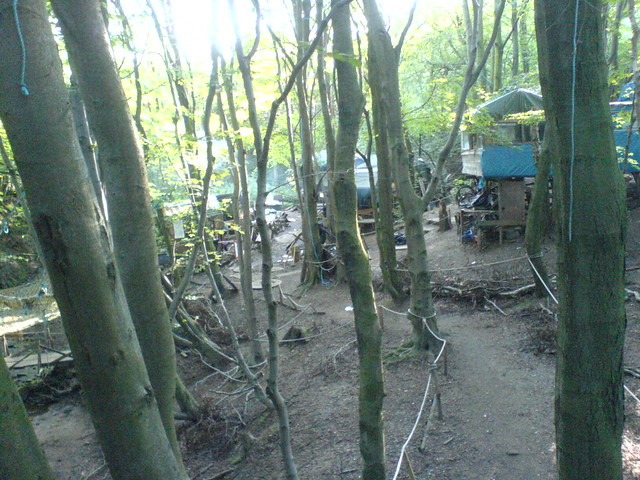Ways of Living
There are ways to live other than in a conventional house.

On Sunday, I went to visit a community in Bilston Glen. Here is a forest with tree houses and ground houses. They are made almost entirely of scrap - parts from skips, wood, rope, glass, planks, carpet, sofas, mattresses, oil drums, gas cylinders.
There is a small hydroelectric plant in the river - it can charge mobile phones, which have signal here, and suchlike.
Food is also available from skips. People can live happily from what others throw away. Perhaps better in many cases, if someone could only afford lower quality food. The several large fridges were full when I visited.
Are people happy here? I don’t know in general, but one girl I spoke to seemed fairly indifferent - it just seemed to be normal. Later, a friend of mine moved here and liked it.
There are a mixture of people who live here. Some have resided for years, others stay for months or days. Some are young and some are old. All will tend to smell of campfire.
I could live in a boat. Move when I want. Work anywhere. Or a tent, hammock, bivvy bag. I thought a hammock in scaffolding could be a good place to sleep if one had to in a town, to be near an office for example.
Is homelessness really bad? It is hard to separate it from poverty and addiction because that seems to be the cause of so much of it but it is not necessarily bad. What is homelessness anyway? Are you homeless if you live in an hotel? What if you are an explorer with tent? What is a home? Can a bike be a home? Is it somewhere comfortable? Is it a place or a feeling? Is it necessary?
I left the woods and soon after IKEA offered me “my dream home”. It came with a contract binding me to money, a bank account, an address, a job, and a place to keep the bloody thing - a sofa.
